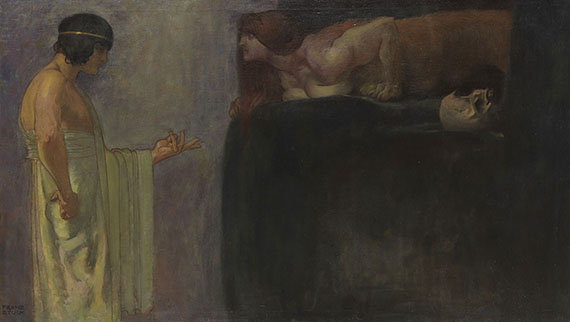Dictionary


High Baroque in Central Europe
Whilst in Western Europe – France, the Netherlands, Spain – the 17th century can be considered a golden age, in central Europe, it was the "century of the Great Wars", as Georg Dehio once described it. It was long believed that the political situation - the Thirty Years War - completely paralysed and provincialised the promising late mannerist art of central Europe. This has, however been successively revised in recent research. Adam Elsheimer (1578-1610), who worked in Italy, is long recognised as the most important painter of the early German baroque. Around the same time, Johann Liss (c. 1597-1631), a powerful artist who largely worked abroad, was executing mainly figurative works. But also in the old Reich (although in adverse circumstances) the first part of the century produced thoroughly remarkable art, which is yet to be re-discovered
The German masters Ulrich Loth (before 1599-1662) and Johann Briederl the Younger introduced Caravaggesque principles into their art. Ruben’s oeuvre also had an impact on Germany’s Catholic South. Particularly, but not exclusively in the protestant North, artists took their inspiration from Holland. One such artists was Christopher Paudifl (1630-66), whose very unique style clearly displayed these northern influences. Paudifl taught himself with Rembrandt’s work, as did Michael Willmann (1630-1706) from the eastern part of the Reich, who was one of the most important masters of central European baroque art. The work of the highly respected Johann Heinrich Schönfeld (1609-c. 84), who fled to Italy after the war, had a strong influence on the second half of the century. Schönfeld settled in Augsburg, and had many followers in the south. The work of Johann Spillenberger (1628-79), and Johannes Christoph Storer (1620-71) display Schönfeld’s influence.
Whilst in Western Europe – France, the Netherlands, Spain – the 17th century can be considered a golden age, in central Europe, it was the "century of the Great Wars", as Georg Dehio once described it. It was long believed that the political situation - the Thirty Years War - completely paralysed and provincialised the promising late mannerist art of central Europe. This has, however been successively revised in recent research. Adam Elsheimer (1578-1610), who worked in Italy, is long recognised as the most important painter of the early German baroque. Around the same time, Johann Liss (c. 1597-1631), a powerful artist who largely worked abroad, was executing mainly figurative works. But also in the old Reich (although in adverse circumstances) the first part of the century produced thoroughly remarkable art, which is yet to be re-discovered
The German masters Ulrich Loth (before 1599-1662) and Johann Briederl the Younger introduced Caravaggesque principles into their art. Ruben’s oeuvre also had an impact on Germany’s Catholic South. Particularly, but not exclusively in the protestant North, artists took their inspiration from Holland. One such artists was Christopher Paudifl (1630-66), whose very unique style clearly displayed these northern influences. Paudifl taught himself with Rembrandt’s work, as did Michael Willmann (1630-1706) from the eastern part of the Reich, who was one of the most important masters of central European baroque art. The work of the highly respected Johann Heinrich Schönfeld (1609-c. 84), who fled to Italy after the war, had a strong influence on the second half of the century. Schönfeld settled in Augsburg, and had many followers in the south. The work of Johann Spillenberger (1628-79), and Johannes Christoph Storer (1620-71) display Schönfeld’s influence.
Offers
Headquarters
Joseph-Wild-Str. 18
81829 Munich
Phone: +49 89 55 244-0
Fax: +49 89 55 244-177
info@kettererkunst.de
Louisa von Saucken / Undine Schleifer
Holstenwall 5
20355 Hamburg
Phone: +49 40 37 49 61-0
Fax: +49 40 37 49 61-66
infohamburg@kettererkunst.de
Dr. Simone Wiechers / Nane Schlage
Fasanenstr. 70
10719 Berlin
Phone: +49 30 88 67 53-63
Fax: +49 30 88 67 56-43
infoberlin@kettererkunst.de
Cordula Lichtenberg
Gertrudenstraße 24-28
50667 Cologne
Phone: +49 221 510 908-15
infokoeln@kettererkunst.de
Hessen
Rhineland-Palatinate
Miriam Heß
Phone: +49 62 21 58 80-038
Fax: +49 62 21 58 80-595
infoheidelberg@kettererkunst.de
We will inform you in time.




